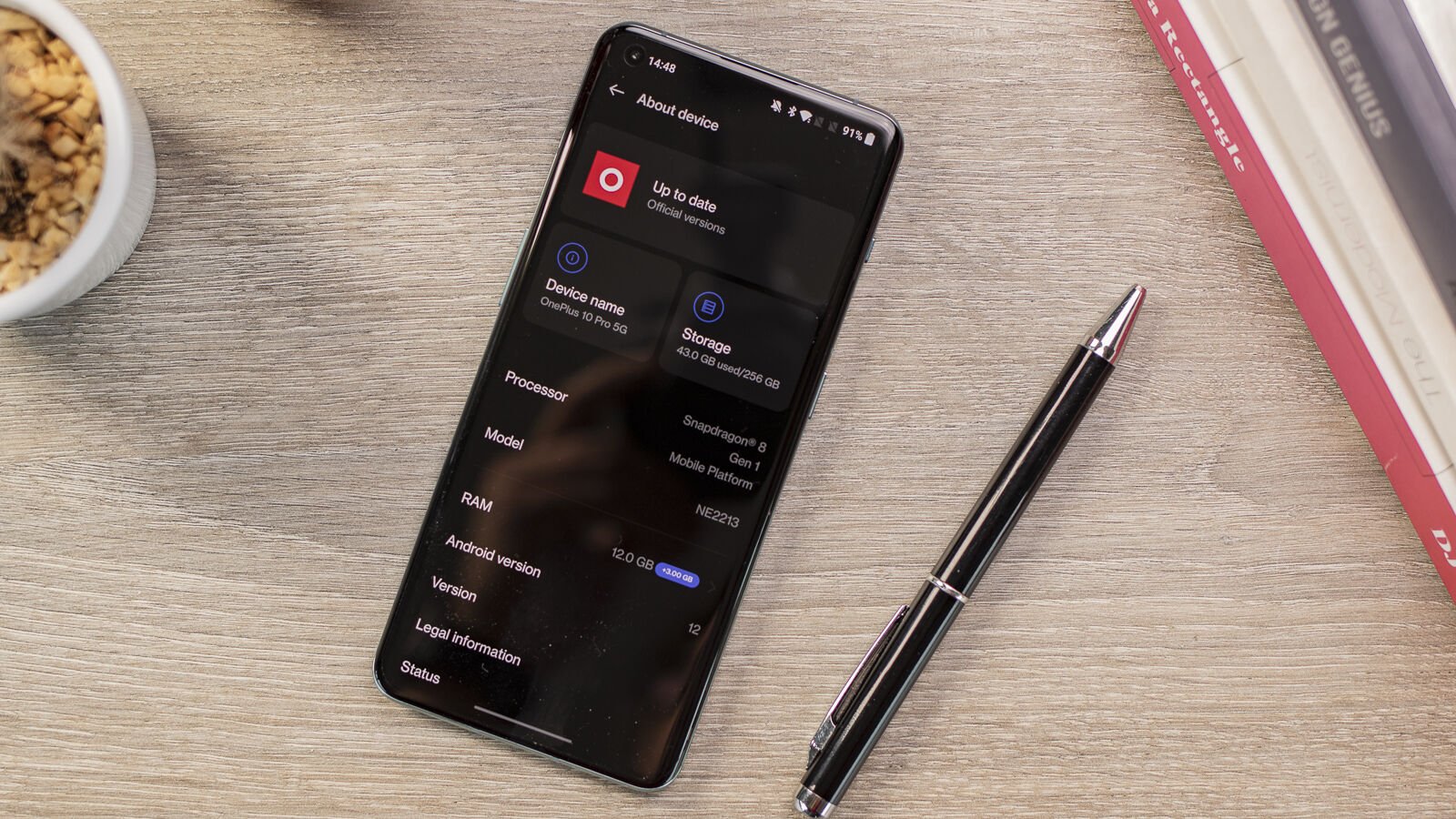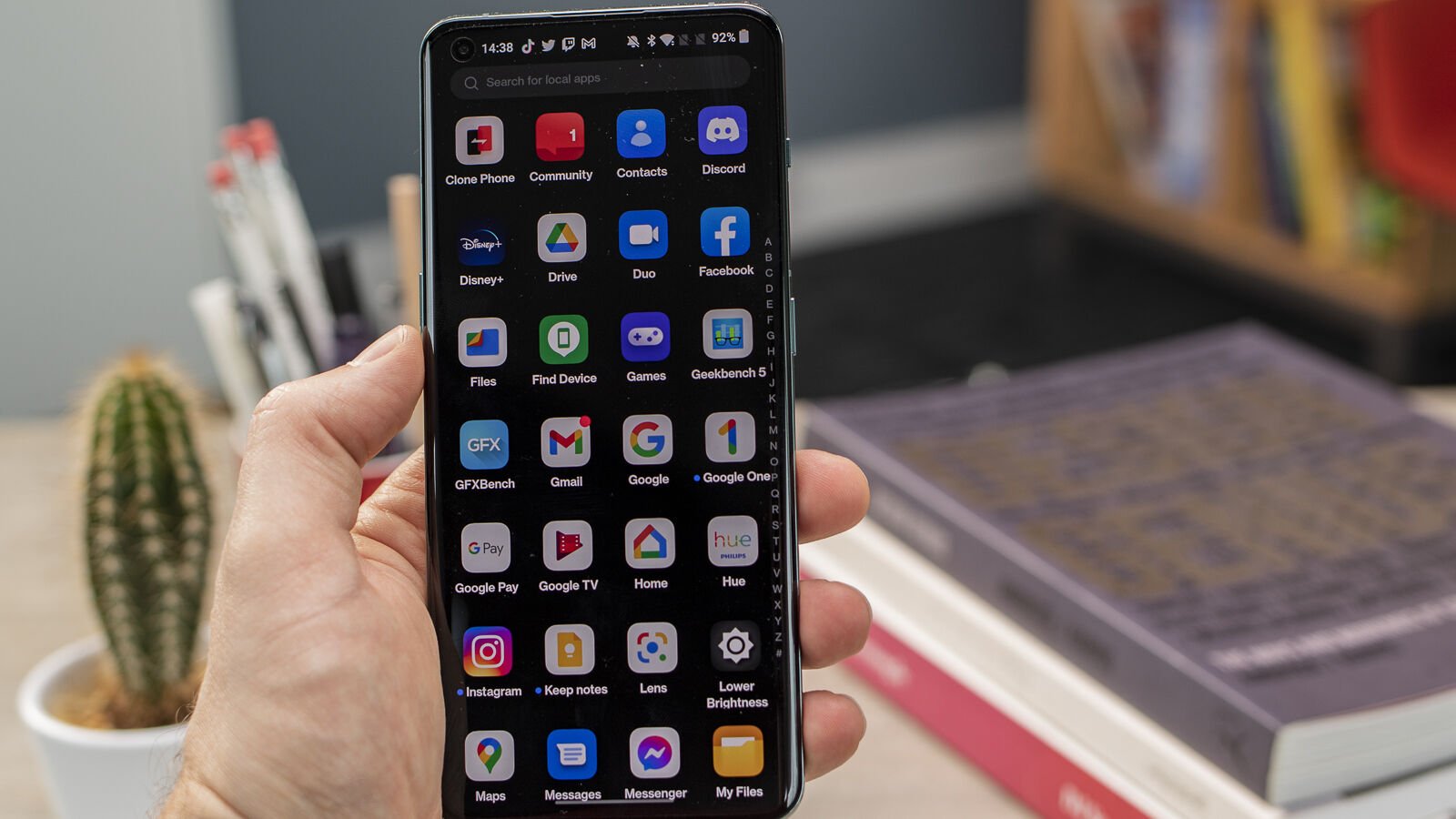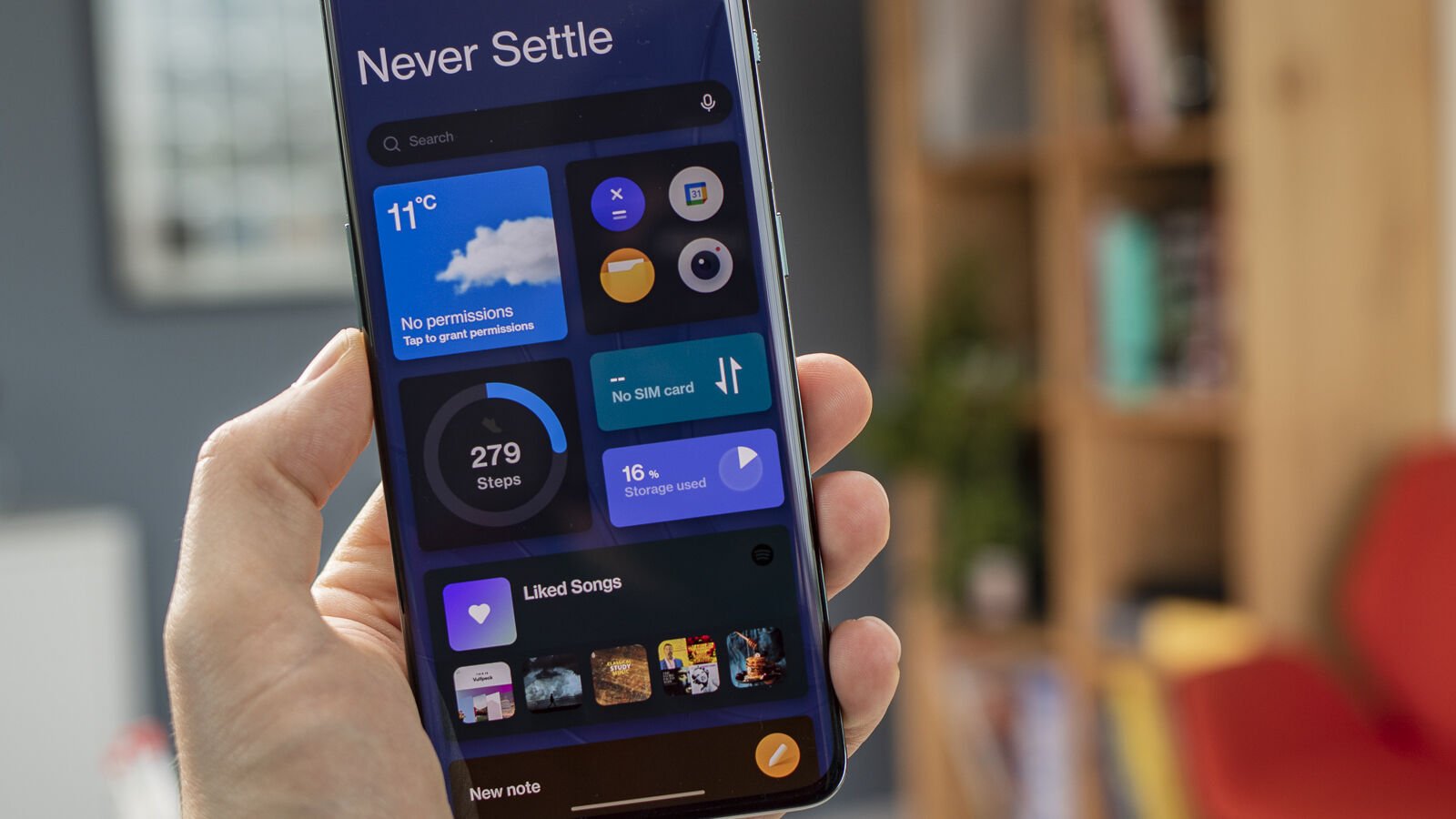OnePlus has undergone a lot of change since we first met the brand as a plucky upstart all those years ago. Having been partially folded into sister company Oppo over the past 18 months or so, the phones that OnePlus is now releasing exist in a very different context to the company’s early handsets and the new OnePlus 10 Pro embodies this shift perfectly.
While an initial January release in China gave us our first taste of what a OnePlus flagship in 2022 looks like, the phone’s more recent expansion into new markets globally really highlights the enduring influence of the brand’s passionate fandom, while reflecting the change that the company is going through internally, all at once.
With no standard OnePlus 10 (and only rumours of a OnePlus 10 Ultra), the 10 Pro is currently the only top-tier OnePlus purpose-built to take on rivals from Samsung, Apple and beyond. But does it deliver?
Design & build
- Surprisingly lightweight
- OnePlus’ signature physical alert slider
- No IP-certified dust or water resistance
For all the technical prowess, performance and innovation last year’s OnePlus 9 Pro touted, it came packaged in an uncharacteristically bland design for the brand. This year, OnePlus’ design team has veered in a wildly different direction, with the OnePlus 10 Pro’s form punctuated by a bold new camera housing that’s impossible to miss and unlike anything the company’s served up to date.
In a design that clearly takes inspiration from entries like Samsung’s Galaxy S21 Ultra, the 10 Pro’s camera system is the first thing your eyes are drawn to; a sizeable, bold arrangement that curves in from the phone’s edge and extends past the mid-point of its back, housing four widely spaced out circular elements (consisting of three camera sensors and a dual-LED ring-shaped flash).

The sensors (and flash) are set within an expansive mirror-polished metal surround that, although blending geometrically, offers up a contrasting appearance that’s (perhaps intentionally) at odds with the rest of the phone’s finish and colour palette. It’s a design choice that helps the OnePlus 10 Pro stand out against the competition while also implying the significance of the phone’s upgraded Hasselblad-branded camera system.
Beyond this statement piece, the 10 Pro serves up a textured glass back that’s great at repelling fingerprints, surrounded by a thin, colour-matched metal frame whose polished finish offers a nice contrast both in feel and appearance.
While Chinese fans also have access to an ‘Extreme Edition’ that offers an exclusive Ceramic White finish, elsewhere in the world you’ll likely encounter the 10 Pro in one of two colourways: Volcanic Black (which feels like a visual nod to the original OnePlus One’s Sandstone finish) or Emerald Forest (green).
While not true everywhere, your choice of colour also affects the RAM and storage options you can expect under the hood (e.g. in the UK, the higher RAM model is exclusively available in Emerald Forest). Something we’ve seen from OnePlus before.
The rounded Gorilla Glass 5 back and (slightly less) curved edges of the Gorilla Glass Victus front make for a comfortable hand feel, in a design that’s pleasingly thin at 8.55mm and deceptively light (despite technically weighing 200.5g); considering the sizeable battery onboard.

The glass meets at that aforementioned aluminium frame, which incorporates a USB-C port along its bottom edge, as well as a power key, volume keys and the company’s signature knurled three-stage physical alert slider; practically unseen outside of select OnePlus’ mid-rangers and flagships and a nice additional tactile detail.
While OnePlus paid for its last two generations of flagships to undergo IP68-certification against dust and water ingress, the 10 Pro looks as though it’s forgone that particular testing and as such, doesn’t come with the same lab-tested assurances.
Even, so there are signs that the phone is still built to withstand the same challenges, with a familiar red rubber gasket around the SIM tray and (as confirmed by independent teardowns) similar treatments around the physical buttons and other elements.
As such, don’t go throwing your 10 Pro in the sink but know that if you do, it likely won’t result in instant death.
Display & audio
- Superb viewing experience
- LTPO 2.0 technology for better power efficiency
- PIN and pattern input awkwardly high on screen
At first glance, the display offered up by the 10 Pro seems identical to its predecessor – a 6.7in 120Hz Quad HD+ AMOLED panel with support for 10-bit colour depth, HDR10+ and a cited 1300nit peak brightness, but the ante has, in fact, been upped.
The 10 Pro’s panel actually shares more in common with Realme’s recent GT 2 Pro flagship, namely in the use of LTPO 2.0 display technology, which means the panel’s variable refresh rate can actually rapidly scale right down to 1Hz, resulting in greater power efficiency.

As well as offering a great general viewing experience – with pleasing colours, deep blacks and respectable outdoor visibility – OnePlus has also gone above and beyond with colour calibration, ensuring the 10 Pro’s panel is designed to show accurate colours at two discreet brightnesses (100nits and 500nits), while most rivals only adhere to calibration at a single brightness level.
Speaking of brightness, the phone’s AI-supported auto-brightness can be trained to your specific tastes by adjusting the slider closer to your preferred values; based on factors like the app in use and the time of day. Generally, it adjusts to a comfortable value for the scenario but I did spend time training it to go dimmer in low light environments, which it started to grasp during the review period.
There are a host of customisation options tied to the viewing experience too, with different colour space profiles (including a Pro mode), screen temperature control, natural tone functionality (which adjusts colour temperature relative to ambient light), an eye comfort mode, image and video enhancers, and the option to change both resolution and refresh rate.
The display defaults to Full HD+ resolution but can be set to Quad HD+ or dynamic, while refresh rate can either be fixed to 60Hz or set to dynamic mode, with that 120Hz maximum.
Those familiar with the OnePlus 9 Pro’s oddly low-slung in-display fingerprint sensor will appreciate its migration northwards on the 10 Pro; sitting much more naturally in the bottom third of the display area, allowing for more comfortable use.

This optical sensor (as well as the RGB-based face unlock) is impressively snappy, however, by shifting the fingerprint reader area up, OnePlus has seemingly had to move the PIN/pattern input to the upper half of the display too; making for an ergonomically awkward experience.
Numerous other phones, like Google’s Pixel 6 line, don’t seem to suffer from this issue, meaning PIN input and fingerprint sensor can occupy the same area of pixels for better comfort and convenience.
Dolby Atmos-certified speakers offer audible stereo separation, but the respective treble/bass bias between the earpiece speaker and the down-firing grille makes for an unbalanced headphone-free sonic experience.
OnePlus introduced a new Radiant Silver colourway of OnePlus Buds Pro alongside the 10 Pro’s global launch, clearly hoping to push prospective buyers towards picking up the new Buds as their go-to audio solution, especially as there’s no headphone jack on-device and no 3.5mm USB-C adapter in-box to speak of.
Software & features
- Clean user experience with great personalisation
- ColorOS 12.1 in China, OxygenOS 12.1 globally
- 3 years OS updates, 4 years security updates
- Great haptic feedback
OnePlus’ OxygenOS user experience has been one of the company’s product’s greatest strengths and standout features; an Android skin offering fluidity and simplicity in a way that really seems to resonate with users.
With this in mind, when the company suggested that OxygenOS would be fusing with Oppo’s ColorOS as part of its OnePlus 2.0 initiative last September, fans were understandably uneasy about the move.
Community feedback, however, pushed OnePlus to walk back this decision, resulting in ColorOS and OxygenOS still running on a newly-unified codebase (making for an easier update roadmap across both platforms), while still retaining each’s individuality on their respective brand’s devices.

OxygenOS 12.1 as it appears on the 10 Pro (running atop Android 12) is, as expected, clean and characterful.
Whenever a ‘1’ appears in the clock widget, it’s rendered in the brand’s signature red, you have control over quick settings and app icon shapes, the UI colour palette, the fingerprint sensor animation and more. You also have the option to use OnePlus Sans in place of Android’s native Roboto font, which helps give the user experience a refreshingly unique look and feel, system-wide.

Haptics have been improved too, with an x-axis motor that’s reportedly 40% stronger than previous entries, making for more precise and tactile interaction.
Enduring extras like the Insight lock screen and The Shelf (a home for your widgets that keeps the home screens clear), have been joined by new inclusions like Work Life Balance, letting you filter notifications based on schedule, app and even account.

The one caveat to the experience offered up by The Shelf is that it’s only accessible by way of a swipe down from the top right corner of the screen, an area I’m used to interacting with in order to access the notifications and quick settings shade. Its original home – to the side of the primary home screen – was abandoned in 2020, but if you’re like me this small tweak comes with a bigger learning curve than expected.
The OnePlus 10 Pro also benefits from the same commitment to software updates that the company made in mid-2021, meaning three years of OS updates and four years of security patches. By no means industry-leading but likely enough to last most users through to their next upgrade.
Specs & performance
- 4nm Snapdragon 8 Gen 1 chipset
- Up to 12GB RAM (LPDDR5)
- Up to 512GB storage (UFS 3.1)
- Optional high-performance mode, RAM Boost and HyperBoost Gaming Engine
OnePlus flagships always aim to offer the best hardware in the business and the OnePlus 10 Pro is no exception, with the phone powered by the latest Snapdragon 8 Gen 1 chipset and sporting a baseline 8GB of LPDDR5 RAM (with a maximum 12GB RAM also available), paired to either 128GB or 256GB of fast UFS 3.1 storage globally and up to 512GB on the China-exclusive Extreme Edition.
The 10 Pro is, as expected, a great real-world performer, with OxygenOS and that 120Hz refresh rate working in concert to offer up a smooth, snappy, responsive user experience, as well as fast app load times.
Artificial benchmarks highlight the relative consistency in CPU performance seen time again when comparing the 8 Gen 1 to last year’s Snapdragon 888, while GPU performance pulls ahead; only really falling behind the AMD RDNA 2-capable GPU inside Samsung’s Exynos 2200 (powering this year’s Galaxy S22 series, in select markets).
If you’re feeling that performance is still somehow lacking, OnePlus has also implemented a dedicated high-performance mode (hidden away in the advanced battery settings menu) that offers even more grunt at the expense of battery life (I only used this during benchmarking to achieve the highest scores the phone was capable of), while a RAM Boost feature is also on-hand to leverage the phone’s speedy storage as additional virtual memory, designed to help with multitasking and the like.
The phone handled demanding games comfortably, supported by a ‘3D passive cooling system’ that resulted in negligible heat build-up, even after extended sessions. The caveat to the gaming experience is that – similarly to the Realme GT 2 Pro – even games that are known to support 120fps gameplay remained capped at 60fps on the OnePlus 10 Pro, even when manually selecting higher refresh rates and enabling High Performance Mode in the battery settings.
There’s also a Pro Gaming launcher that offers an in-game overlay to manage things like notifications and brightness independently of the phone’s wider settings, as well as allowing for real-time performance monitoring of RAM, GPU load and even system temperature. Select games also support real-time game filters that change the game’s visual output for aesthetic or functional advantage (depending on the game).
OnePlus has confirmed that the 10 Pro will benefit from Oppo’s HyperBoost Gaming Engine (featuring a branded toolset, consisting of the GPA Frame Stabiliser, O-Sync and GPU Load Control) set to be issued in a forthcoming update that will hit devices…
